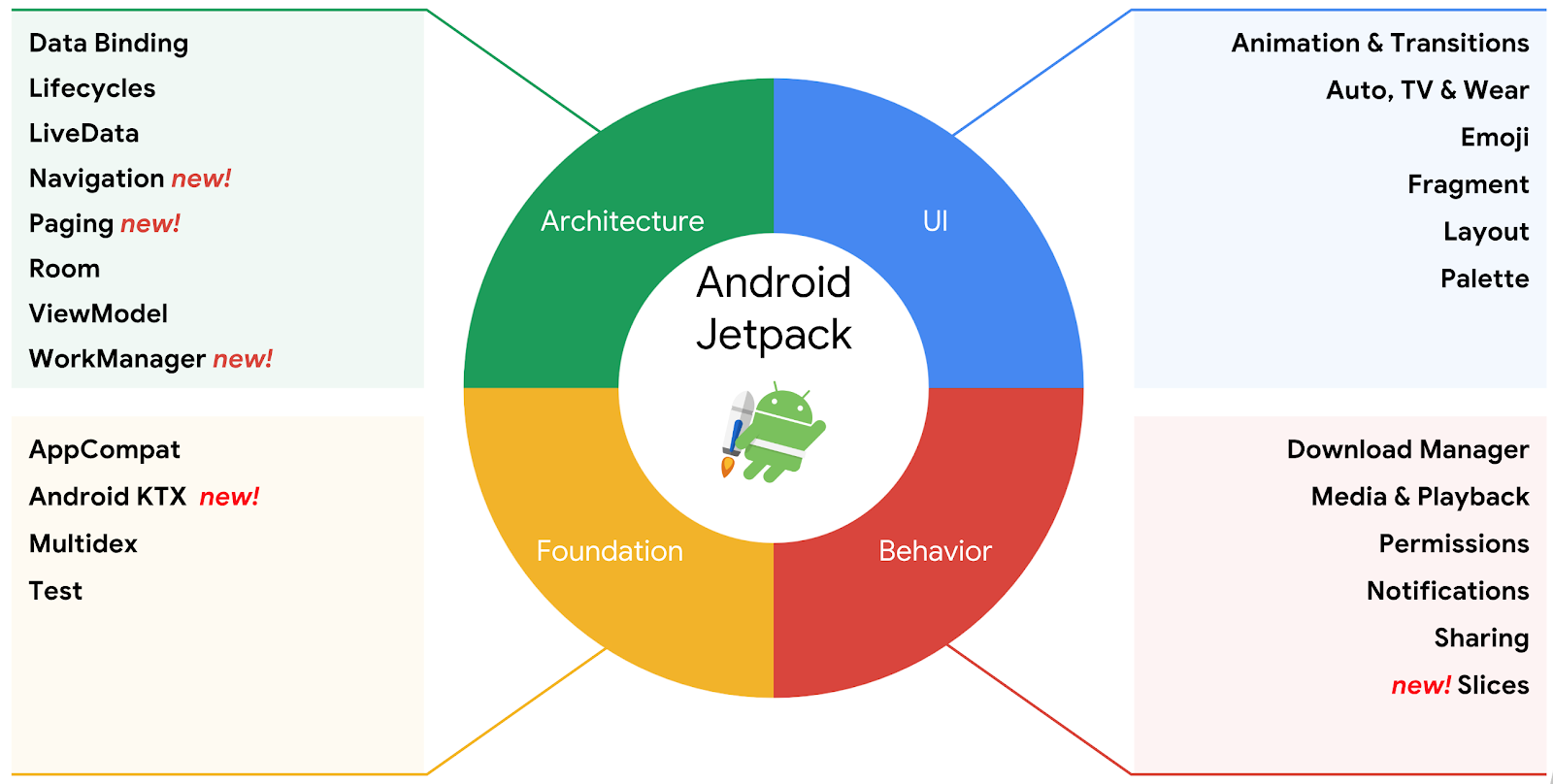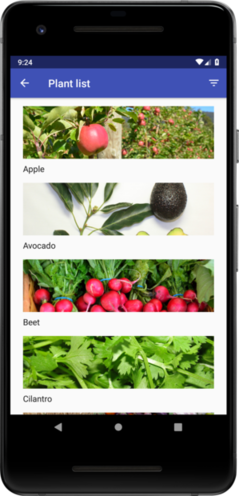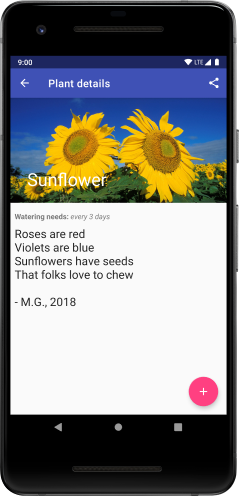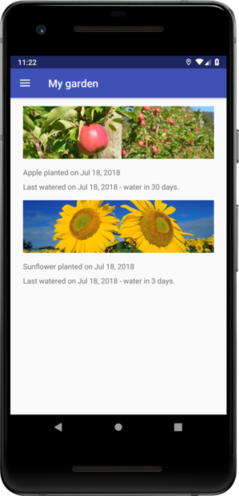A gardening app illustrating Android development best practices with Android Jetpack.
Android Sunflower is currently released as an alpha and is under heavy development. To view the latest changes, please visit the Releases page. Note that some changes (such as database schema modifications) are not backwards compatible during this alpha period and may cause the app to crash. In this case, please uninstall and re-install the app.
Android Jetpack is a set of components, tools and guidance to make great Android apps. They bring together the existing Support Library and Architecture Components and arranges them into four categories:
Android Sunflower demonstrates utilizing these components to create a simple gardening app. Read the Introducing Android Sunflower article for a walkthrough of the app.
This project uses the Gradle build system. To build this project, use the
gradlew build command or use "Import Project" in Android Studio.
There are two Gradle tasks for testing the project:
connectedAndroidTest- for running Espresso on a connected devicetest- for running unit tests
For more resources on learning Android development, visit the Developer Guides at developer.android.com.
- Foundation - Components for core system capabilities, Kotlin extensions and support for
multidex and automated testing.
- AppCompat - Degrade gracefully on older versions of Android.
- Android KTX - Write more concise, idiomatic Kotlin code.
- Test - An Android testing framework for unit and runtime UI tests.
- Architecture - A collection of libraries that help you design robust, testable, and
maintainable apps. Start with classes for managing your UI component lifecycle and handling data
persistence.
- Data Binding - Declaratively bind observable data to UI elements.
- Lifecycles - Create a UI that automatically responds to lifecycle events.
- LiveData - Build data objects that notify views when the underlying database changes.
- Navigation - Handle everything needed for in-app navigation.
- Room - Access your app's SQLite database with in-app objects and compile-time checks.
- ViewModel - Store UI-related data that isn't destroyed on app rotations. Easily schedule asynchronous tasks for optimal execution.
- WorkManager - Manage your Android background jobs.
- UI - Details on why and how to use UI Components in your apps - together or separate
- Animations & Transitions - Move widgets and transition between screens.
- Fragment - A basic unit of composable UI.
- Layout - Lay out widgets using different algorithms.
- Third party
- Glide for image loading
- Kotlin Coroutines for managing background threads with simplified code and reducing needs for callbacks
Updates will include incorporating additional Jetpack components and updating existing components as the component libraries evolve.
Interested in seeing a particular feature of the Android Framework or Jetpack implemented in this app? Please open a new issue.
For development, the latest version of Android Studio is required. The latest version can be downloaded from here.
Sunflower uses ktlint to enforce Kotlin coding styles. Here's how to configure it for use with Android Studio (instructions adapted from the ktlint README):
-
Close Android Studio if it's open
-
Download ktlint using these installation instructions
-
Inside the project root directory run:
./ktlint --apply-to-idea-project --android -
Start Android Studio
Check out these Wiki pages to learn more about Android Sunflower:
The focus of this project is on Android Jetpack and the Android framework. Thus, there are no immediate plans to implement features outside of this scope.
A note on dependency injection - while many projects (such as Plaid) use Dagger 2 for DI, there are no plans to incorporate DI into Sunflower. This allows developers unfamiliar with dependency injection to better understand Sunflower's code without having to learn DI.
- Stack Overflow:
If you've found an error in this sample, please file an issue: https://github.com/googlesamples/android-sunflower/issues
Patches are encouraged, and may be submitted by forking this project and submitting a pull request through GitHub.
Select text used for describing the plants (in plants.json) are used from Wikipedia via CC BY-SA 3.0 US (license in ASSETS_LICENSE).
Copyright 2018 Google, Inc.
Licensed to the Apache Software Foundation (ASF) under one or more contributor license agreements. See the NOTICE file distributed with this work for additional information regarding copyright ownership. The ASF licenses this file to you under the Apache License, Version 2.0 (the "License"); you may not use this file except in compliance with the License. You may obtain a copy of the License at
http://www.apache.org/licenses/LICENSE-2.0
Unless required by applicable law or agreed to in writing, software distributed under the License is distributed on an "AS IS" BASIS, WITHOUT WARRANTIES OR CONDITIONS OF ANY KIND, either express or implied. See the License for the specific language governing permissions and limitations under the License.



